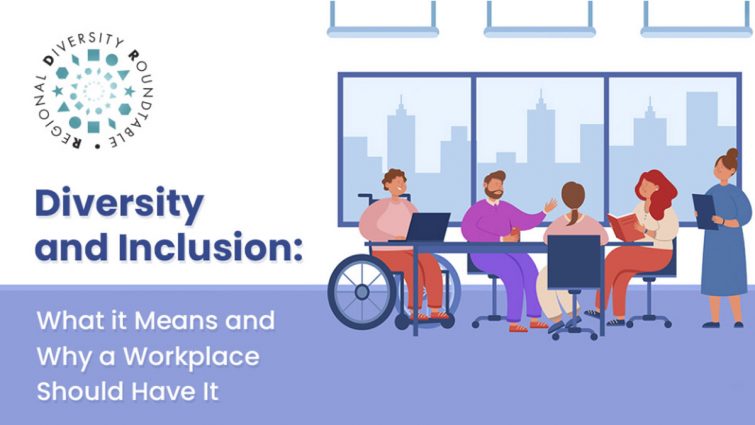Defining Workplace Diversity
Having a diverse workplace is imperative in today’s social settings. Therefore, your workplace and employees must reflect the values of the society within which it operates. However, diversity cannot be defined in a straightforward manner. While humans have unlimited differences, most of us instinctively represent diversity by a few social categories like gender, ethnicity, age, sex, and so on. Therefore, a diverse workplace is one where employees reflect a diverse range of experiences and characteristics.
Different Types of Diversity Found in the Workplace
Initially, diversity only entailed racial and ethnic diversity; however, over time, diversity entails a lot more characteristics.
Workplace diversity now encompasses characteristics such as:
- Gender
- Age
- Race
- Ethnicity
- Religion
- Education
- Language
- Political Beliefs
- Military Service
- Sexual Orientation
- Physical Abilities and Disabilities
- Socioeconomic Background
- Geographical Orientation
What is Inclusion in the Workplace?
Inclusion is another term that is used in conjunction with diversity. Inclusion is the practice of providing everyone with equal access to opportunities and resources. For example, workplace inclusion programs help traditionally marginalized groups, such as women, people of color, and those with physical or mental disabilities, feel equal to the rest in the workplace.
The Regional Diversity Roundtable is helping companies understand the ever-growing importance of inclusion in the workplace. RDR conducts events, seminars, webinars, and workshops throughout the year. The events are a significant opportunity for individuals and communities to learn and understand the importance of diversity and inclusion and interact with a like-minded community. In addition, you can book a DEI speaker for an internal event or conference to enhance your company’s goals towards inclusion.
Diversity vs. Inclusion: What is the Difference?
The behaviors and societal standards that ensure everyone feels accepted are considered inclusion. The features and characteristics that distinguish humans are referred to as diversity. Inclusion is crucial for diversity efforts and enhances employee engagement and productivity.
Inclusion aims to make employees with all of the characteristics mentioned above (and more) feel safe, happy, and respected. In contrast, diversity focuses on the demographics of your workplace (gender, race, age, professional background, sexual orientation, and so on).
Though diversity and inclusion are not synonymous, neither can exist without a culture that encourages various perspectives. A closed-minded business culture will stymie any pretense of diversity or inclusion. It is the responsibility of leadership to openly acknowledge the importance of multiple points of view.
What makes Workplace Diversity Crucial?
Workplace diversity is becoming a requirement rather than a banner organization’s wave to show commitment to welcoming differences in today’s modern, internationally connected society and market.
The bulk of modern enterprises may offer their products worldwide to diverse customers. As a result, companies require a diverse workforce to successfully create, display, and sell their products in this global market.
Apart from global markets, it is becoming increasingly important to stand out in the community with your unique proposition and product offerings. Through diversity, it is easy to tap into local markets. It allows various team members to understand the pulse of the community to which they’re selling and customize products to suit their requirements. For example, if you’re a restaurant owner aiming to serve a multi-cultural cuisine, it would help understand the taste palates of different cultures and people to cater to them. Only a diverse team can bring to light the various customizations required on a menu suitable to multiple audiences. Diversity is the key to surviving in both global and local markets.
What are the Benefits of Diversity and Inclusion in the Workplace?
Businesses that use a diverse workforce enjoy several advantages over those that do not. Diversity in the workplace is about much more than just improving your company’s image. Diverse workplaces offer a slew of direct and tangible benefits.
Some of the most often cited benefits of workplace diversity are as follows:
- A wide range of perspectives
- Improved employee participation
- An improved ability to solve problems
- Improved hiring success
- Improved profitability
- Lower rate of employee turnover
- Improved public impression of the company
- Increased creativity
- A recent study revealed an increased, positive relationship between cognitive innovation and diversity
- Diverse companies have the ability to capture a new market audience better.
Workplace Diversity and Inclusion Statistics
The two most frequently cited statistics about the benefits of workplace diversity are as follows:
According to McKinsey’s research, racially and ethnically diverse organizations outperform industry averages by 35%.
According to a Glassdoor survey, 67% of job seekers look for a diverse staff when considering job offers, while 57% of employees say their firm should be more diverse.
How Regional Diversity Roundtable is Changing the Workplace Landscape
Regional Diversity Roundtable was founded with the vision of helping companies become well-rounded and helping them improve their inclusion, diversity, and equity goals. RDR will help train and coach your team to build DEI capacity to bring about a systematic change. Book a 30-minute consultation to understand your requirements and how your organization can move in a more positive direction. From hiring one-on-one strategic support to booking a speaker, RDR is here to help your organization meet its goals to make it more functional by assisting employees to reach their true potential.
